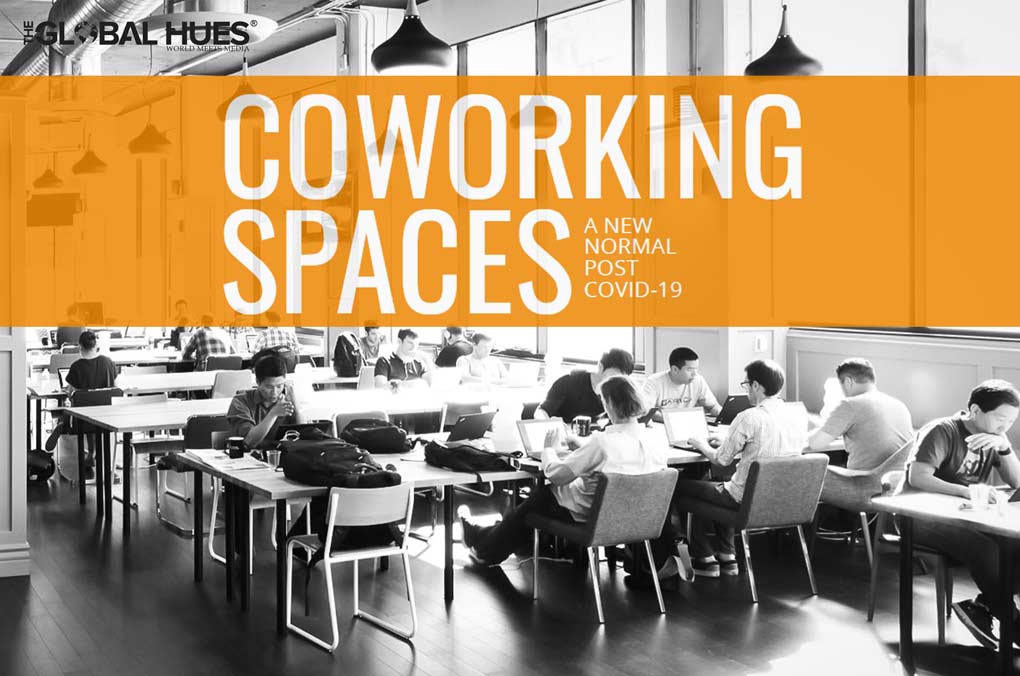According to reports, there are about 35,000 flexible workspaces in the world today. Its global market value is estimated at approximately $26 billion.
From a whisper to a scream best illustrates the sudden expansion of coworking spaces in the post covid world. Although the concept of coworking spaces is not new to the world but the advent of the pandemic has solidified coworking’s standing as a preferred workplace solution. A new generation of entrepreneurs brought with it a critical eye on the traditional office system. In the 90s, the demand for coworking space grew due to the strong desire for flexibility, and a longing for community.
EVOLUTION OF THE TERM
The first usage of the term “Coworking” dates back to 2005 when Brad Neuberg, a frustrated freelance computer programmer launched the first coworking space in San Francisco. The place was named “San Francisco Coworking Space” and was opened on Mondays and Tuesdays. As the term was completely new to people, it didn’t attract any visitors in the first month of its establishment.
In the early days, nobody knew the importance of coworking space and simply argued that it was nothing more than a movement that would fade away eventually but the current situation is leading to the expansion of this terminology. Today, many people use coworking spaces and workplace-as-a-service to refer to the same thing. One thing that becomes clear here is that no matter what terms anyone uses but flexible work environments are evolving very rapidly and are here to stay.

WHAT DO STATISTICS SUGGEST?
Despite the negative impact of Covid-19 on coworking spaces, it is expected to grow and thrive in the coming years at a fast pace.
- Despite the pandemic, many markets globally have shown increased demand for flexible workspace, and on shorter terms. The Instant Group forecasts flexible workspace supply growth of over 21% in 2021.
- As of Q2 2020, the coworking footprint nearly doubled since 2017 to 86.0 million square feet.
- Coworking space as a percentage of total office space nearly doubled from 1.1% in 2017 to 2.1% as of Q2 2020
- Coworking is not just liked by corporates but it is also grasping the interest of landlords, property developers, and investors. According to research and surveys, landlords will increasingly allocate 10 – 25% of their assets for flexible leases.
- The share of the flexible office market held by London continues to grow year on year, up to 31% in 2020.
- The UK flexible workspace market is on track to hit 12.5% penetration within two years – a doubling of current supply.
- Inner cities have become the most popular location type to date in 2020 with a 52% share of demand.
- Coworking Insights surveyed 360 individuals in partnership with Coworker. The respondents were asked to rate remote working on a scale of one to 100. The respondents rated remote work a 70 out of 100 on an average.
COMPANIES THAT EXPERIMENTED WITH THE CONCEPT OF COWORKING
There are many well-known and famous companies that started at coworking spaces. Some of them are:
- UBER: The founders of Uber Travis Kalanick and Garrett Camp started to solve the cab crisis in San Francisco at a coworking space. Now, Uber is currently operating in over 85 countries around the globe and the number continues to grow each passing year.
- INSTAGRAM: Kevin Systrom and Mike Krieger founded the now-famous social networking application at Dogpatch Labs coworking space. Today, Instagram has 1 billion monthly active users at the global level.
- SPOTIFY: It was launched in 2008 by Daniel Ek and Martin Lorentzon in a coworking space based in Stockholm, Sweden. Spotify recently reported a rise in total monthly active users by 22%. It had 165 million premium subscribers worldwide, as of the second quarter of 2021.
- HOOTSUITE: It was also launched at a coworking space in San Francisco by Ryan Holmes in 2008. It continues to use coworking spaces around the globe while expanding.
WHY COWORKING SPACES ARE IN DEMAND NOWADAYS?
Nowadays, entrepreneurs are choosing coworking spaces thereby creating a lot of demand. There can be plenty of reasons:
- Increased Productivity: For business owners, it becomes difficult to concentrate on work when children need attention, and the house needs maintenance, etc. A coworking space, therefore, solves this problem. A coworking space not only helps you to immerse yourself in a perfect business environment but also helps you to cope with your tasks much faster.
- Flexibility: Coworking space providers always give flexible conditions that are comforting to any employer. No lease and term contracts ensure better flexibility. If they like the experience, they can continue working otherwise there’s no harm in canceling the subscription.
- Cost-Efficiency: There are a lot of extra costs involved when you rent an office on your own, with extra added costs like furniture, internet, free coffees, and snacks, etc. However, flexible workplaces come equipped with an array of all these perks.
Summing up, it can be said that coworking spaces are just not a trend anymore but are becoming the expected and preferred workplace of today’s workforce. Coworking spaces are now becoming mainstream. Companies are shifting towards more flexible workforces without creating the hassle of paying hefty rents and other associated expenses for a long period of time, to counter the uncertainty of the future.
Sources: Statistics used in this report have been taken from various sources like The Instant Group, Coworking Insights, JLL, CBRE, Colliers International, and Cushman & Wakefield.




